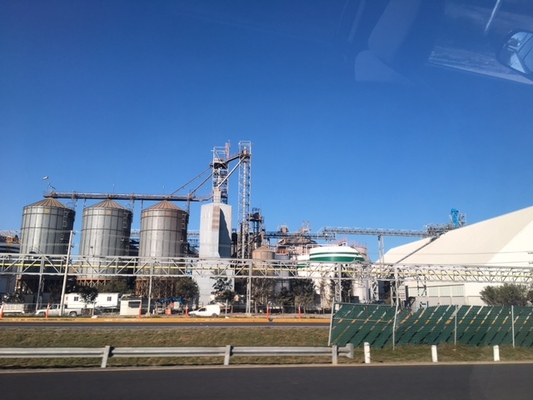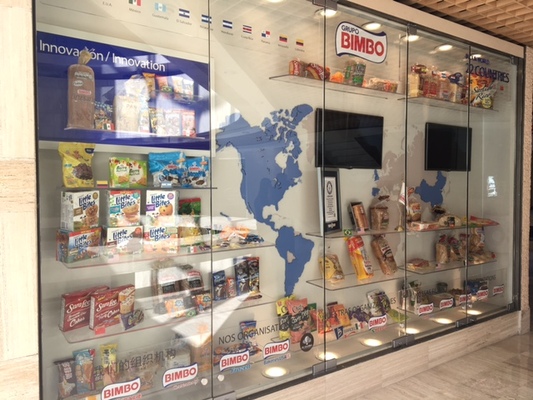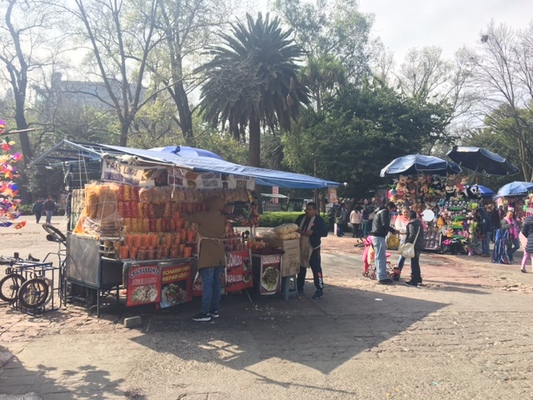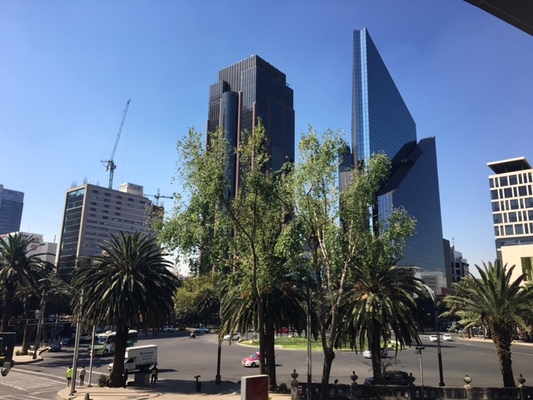- I was pleased to see improved security in Mexico City and impressive new infrastructure in the industrial northern city of Monterrey.
- Most companies with which I met are closely watching the potential policy shifts from the Trump administration related to trade, immigration, and taxation. Few companies have taken action yet.
Upon arriving in Mexico for the first time in two years, I was pleased to see improvements in both infrastructure and security. The immigration and customs procedures at the Mexico City International Airport were streamlined and efficient, a great improvement from my last trip there in 2015. I also observed a new international airport under construction, intended to facilitate travel to and from this vibrant North American capital city. In the industrial northern city of Monterrey, infrastructure improvements were omnipresent, including an efficient network of toll roads, tunnels, and bridges; a modern metro system; and several impressive skyscrapers. Less tangible but no less important was a sense of improved security across the federal capital. I saw a greater police presence in the neighborhoods that I visited and along the thoroughfares on which I travelled. Most of all, I was pleased to see the spirit of perseverance of the Mexican people intact, something I have long admired about Mexico.
Notwithstanding these advances, the uncertainties and concerns resulting from the outcome of the recent U.S. presidential election were palpable in almost every interaction that I had in both Mexico City and Monterrey. Many people were understandably concerned about the prospect of altered trade agreements with the U.S. and the potential impact on the Mexican economy. Amidst this sea change in relations between the two nations, I wanted to understand what business challenges Mexican companies were anticipating for the year ahead and how they planned to react. Specifically, I asked each company whether it was cutting capital expenditures, cancelling expansion plans, or delaying projects; if it was seeing customers and/or competitors change their behavior in any meaningful way; and if it was changing any of its hedging policies related to currency exposure or raw material inputs. I also asked broader questions related to how the new U.S. administration might affect Mexico as a whole.
I found it notable that out of the 13 companies that I met with, only three chose to disclose any concrete steps they have taken as a direct result of the new U.S. administration. This suggested most are prudently waiting for actual U.S. policy changes that could affect their business operations to be implemented before taking any action.
The companies that were already reacting to the new U.S. administration had thoughtful and measured plans. One bank management team said that it will undertake a conservative approach to lending in the year ahead, focusing on credit quality over growth. That bank has publicly discussed the prospect that it will adjust downward its loan growth targets for 2017 when it releases its financial results later this month. A food and beverage company will increase its hedging program on raw material inputs, many of which are denominated in U.S. dollars or have prices that are indexed to the dollar’s effective exchange rate against the Mexican peso. Lastly, an industrial conglomerate is communicating with trade representatives in the U.S. to ensure that all parties understand the intricacies of their supply chain – especially how many times components cross the border before final products are exported from Mexico to the U.S.
During the management meeting with the industrial conglomerate, the complexities of any adjustment to cross-border trade were laid bare, particularly via reference to the “rules of origin” as specified in the North American Free Trade Agreement (NAFTA) treaty. These rules are detailed and complex, but one important aspect is that if a certain percentage of the raw materials or components used to manufacture a good originates outside of NAFTA (e.g., components produced in China), then the finished product does not qualify for preferential tax treatment. This industrial conglomerate told me that some of its finished products currently trigger this “rules of origin” clause and therefore do not qualify for preferential tax treatment in the first place. The management’s outreach to U.S. trade representatives is motivated by a desire to keep communication lines open, and to ensure that both sides understand the short- and long-term implications of a dramatic change to trade policies given the entwinement of the two economies. No matter what happens from a legislative point of view, the actual mechanics and relationships of trade are far more complex than most people understand, as this Mexican conglomerate was keenly aware.
To be clear, the implications of a potential NAFTA breakup are significant for Mexico, given that its exports are mostly directed to the U.S. More than 80% of Mexican exports go to the U.S., according to government trade data from the third quarter of 2016.1 This is why Mexican equities and the peso swooned in the wake of the November election. While a depreciating Mexican peso is painful for the international investor and problematic for many Mexican companies, there are certain sectors of the Mexican economy that benefit from a less expensive currency. My research suggests that aviation and tourism companies are experiencing a significant increase in business from the weaker peso. One airport operator saw December passenger traffic up 14.6% compared to the prior year. Should the increased tourism in December continue, it could act as a tailwind for Mexico as it weans itself from heavy dependence on oil revenues and U.S.-bound exports.
The majority of the management teams I visited on this trip stated that they haven’t seen any notable changes in customer behavior, and as such, they are not pulling back on capital expenditures, nor are they changing their expansion plans or business models in any meaningful ways. All 13 of the companies that I met with were waiting for facts related to potential changes in trade, tax, remittance and immigration policies; all sought to avoid overreaction based on speculation. Most Mexican companies will report financial results for the fourth quarter of 2016 in late January 2017. As companies discuss their results on earnings release conference calls with investors, usually a great deal of emphasis is placed on comments about current business conditions, and any forecasts for the year ahead. I will pay particularly close attention to these company communiqués for any additional measures that might result from the decisions made on both sides of the border in the first 100 days of the Trump administration.
Kate Jaquet







- The views and information discussed in this commentary are as of the date of publication, are subject to change, and may not reflect the writer’s current views. The views expressed represent an assessment of market conditions at a specific point in time, are opinions only and should not be relied upon as investment advice regarding a particular investment or markets in general. Such information does not constitute a recommendation to buy or sell specific securities or investment vehicles. It should not be assumed that any investment will be profitable or will equal the performance of the portfolios or any securities or any sectors mentioned herein. The subject matter contained herein has been derived from several sources believed to be reliable and accurate at the time of compilation. Seafarer does not accept any liability for losses either direct or consequential caused by the use of this information.
- Kate Jaquet is a Registered Representative of ALPS Distributors, Inc.
- Source: Trading Economics
![[Chrome]](/_layout/images/ua/chrome.png)
![[Firefox]](/_layout/images/ua/firefox.png)
![[Opera]](/_layout/images/ua/opera.png)
![[Microsoft Edge]](/_layout/images/ua/edge.png)